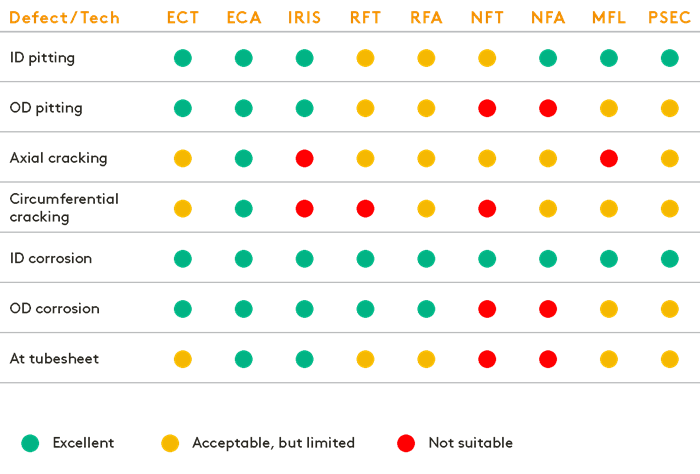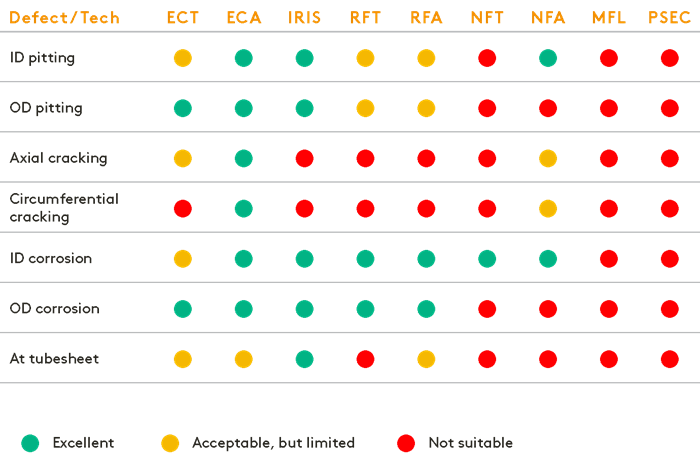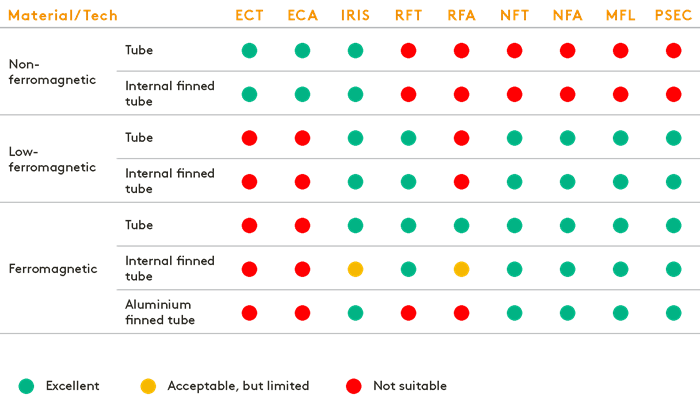Internal Rotary Inspection System (IRIS)
The internal rotary inspection system (IRIS) is an ultrasonic non-destructive testing (NDT) technique used to inspect pipes and tubes.
Details
How it Works
Because IRIS is an ultrasonic technique, it requires a couplant. In this case, water. Tubes under test must therefore first be flooded to use this technique. IRIS relies on a transducer to generate an ultrasonic pulse parallel to the axis of the tube under test. It also relies on a rotating mirror that directs the ultrasonic wave into the tube wall. The mirror is driven by a small turbine powered by the pressure of water pumped into the tube.
Part of the ultrasonic wave is reflected by the inner-diameter (ID) wall, while the rest is reflected by the outer-diameter (OD) wall of the tube. Because the ultrasonic velocity of the tube’s material is known, it is possible to assess the thickness of the wall by calculating the difference in times of flight between the two diameters.
As the probe is pulled, the spinning motion of the mirror results in a helical scan path.
A critical aspect of IRIS is ensuring that the mirror is at the center of the tube. An off-center ultrasonic pulse yields a distorted scan image because of the different ID and OD wall sound paths. That’s why our IRIS kits are equipped with centering devices helping operators keep the system centered.
IRIS is commonly used in boilers, shell-and-tube heat exchangers, and fin-fan heat exchanger tubes.
Ask an ExpertBenefits
IRIS testing has several advantages over others:
- Works on all materials, regardless of properties.
- Full sensitivity near tube support structures such as tubesheets.
- Perfect as a backup to electromagnetic testing.
- Very accurate wall thickness measurement results.
Detection Capabilities According to Defect Type in Tubing

Sizing Capabilities According to Defect Type in Tubing

Suitability According to Tubing Material
Learn more








